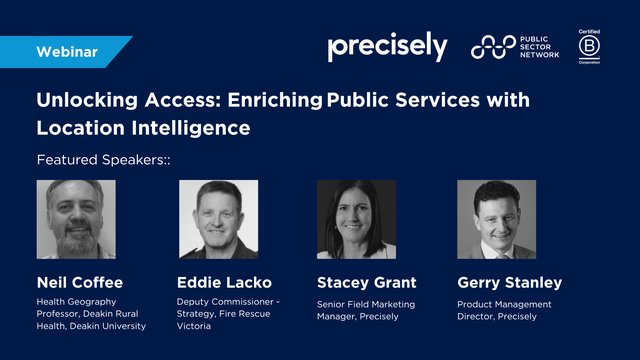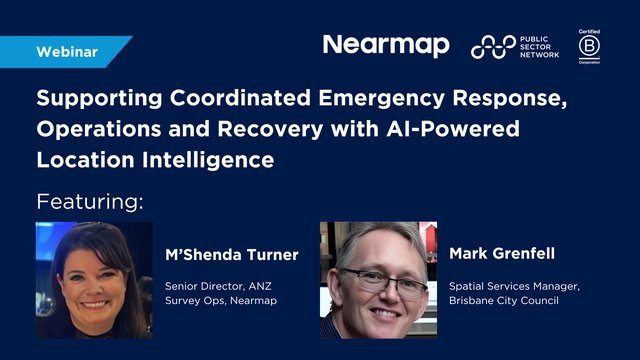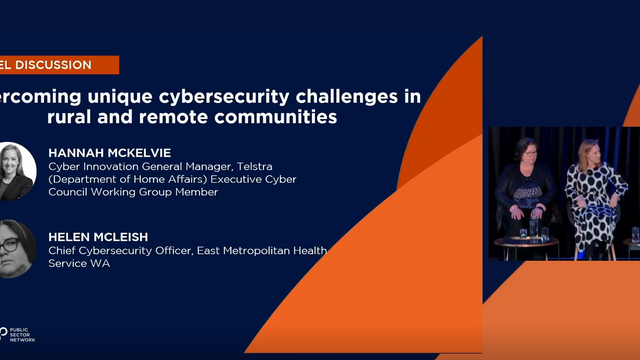How Extreme Weather Events and a Global Pandemic are Forcing a Reassessment of Emergency Management
Across Australia, the start of the pandemic also coincided with more floods, bushfires and other natural disasters. The week that COVID-19 was first detected in late December 2019, was also the week that the black summer bushfires began across eastern Australia. Since then, all emergency services have been over-stretched and at times, overwhelmed.
When coupled with imposed limitations on movement, resource reallocation, and team and volunteer restrictions due to quarantine requirements, the COVID-19 pandemic has forced a reassessment of emergency management and pandemic response activities. Below we hear first-hand accounts from Dr Alan March, Professor, Urban Planning, Disaster Risk Reduction at the University of Melbourne and Andrew Crisp APM, Emergency Management Commissioner at Emergency Management Victoria.
Alan and Andrew explore how COVID-19 became a catalyst for the reworking of existing emergency preparedness plans, how climate action coupled with social and town planning change can help manage the problem, and finally how better collaboration with communities can help build safer futures.
Proactive Planning
Andrew Crisp APM, the Emergency Management Commissioner at Emergency Management Victoria, says that though all of the disasters essentially started at the same time, it was not entirely surprising since emergency services have known for a long time that “we are undoubtedly going to have more floods, fires and other disasters.”
In Victoria, though they didn’t anticipate a pandemic the scale of COVID-19, they certainly knew that climate change was going to affect them in some way, and that natural disasters were going to increase. The Black Saturday bushfires in 2009 were in many ways and for many people the first example of how climate change is affecting emergency management, “but those of us in this field knew of the dangers before, and I am glad it is now getting the priority it deserves.” For many years, emergency management services have had plans, but “we are not good at testing them across all of our agencies.”
In fact, though most emergency management agencies likely had pandemic plans, when a real pandemic like COVID-19 came along, “they hadn’t accounted for the fear of the people, or the specific skillsets required to deal with a pandemic. We need to better plan for things to come, and COVID was probably a catalyst for that.” The next big challenge is climate change that everyone should have plans for, but that has not always been the case.
“ In terms of climate change, we have a very proactive state government and various departments that are leading the way and working with agencies like ours as much as they can, but COVID has taught us that you don’t always control your own destiny so you need to be prepared. ”
- Andrew Crisp APM, Emergency Management Commissioner, Emergency Management Victoria
Encouraging Social Change
Town planning and design are some of the most effective tools in dealing with the climate crisis. While urban centres are among the largest sources of emissions globally, and pose substantial risks in emergency management due to density and population concentration, they’re also potentially powerful agents of change.
As Dr Alan March, a Professor of Urban Planning and Disaster Risk Reduction at the University of Melbourne, who has focussed much of his research on natural hazards and bushfires, explains, ultimately providing safety is about “trying to encourage people to thrive in all the diverse ways that people can thrive.” As such, “it is our job as town planners and as other professionals in this field, to take responsibility for this collective problem” of climate change.
The main reason for this is that Deloitte Access Economics for instance, forecasts that “the cost of natural and social disasters in Australia, even if we get to low emissions, could be as high as $1.2 trillion by 2060. [1] This is our children’s future. It may not be avoidable, but with work from all our agencies, the costs can be significantly reduced.”
[1] https://www.insurancenews.com.au/daily/natural-disasters-to-cost-australia-1-2-trillion-over-four-decades
For instance, the way Australia is arranged is unlikely to change, since “we are a profoundly urban nation,” and floods and fires will continue to occur, maybe at greater frequency. But the question is, “why were houses built on a floodplain in the first place, and if they are destroyed by a natural disaster, should they be rebuilt in the same location?” This may be beyond the scope of emergency management, but it is nonetheless something that everyone working in this field should think about.
Building Safer Futures
With the unpredictable acceleration of climate uncertainty, increased community engagement and education can kick-start urgently needed steps to begin tackling climate change, building safer communities and creating healthier futures.
Sharing an example of Melbourne, Alan continues; “Melbourne in particular is growing at 2% per annum, though we’ve had a little pause for a couple of years, and Melbourne is also very dense; actually one of the densest CBDs in the world.” In terms of emerging risks – both natural and unnatural – this may not be very sustainable without the right preparations in place. For instance, “we haven’t really begun to grapple with what happens if there is an emergency and people have to filter out of a building into a dense CBD in the middle of the night with no power on?” Cities like Melbourne are “huge juggernauts that are very diverse, complex risk landscapes.” All emergency services need to be aware of this.
“In the urban centres of Australia there are so many elements in terms of climate change and disaster planning, and we haven’t really kept up with managing risk for a long time. But we have an answer if we want it, and that is integration and long-term thinking, which will make all the tiny little decisions add up to something.”
- Dr Alan March, Professor, Urban Planning, Disaster Risk Reduction, University of Melbourne
Andrew Crisp says that for all of the agencies in this sector, this kind of long-term thinking – like all decisions – is made by people, and “we are only as good as the people we work with and the communities we engage with.”
To really tackle climate change, “we need to build better messaging about what emergency management can deliver. The community generally doesn’t understand.” This means going out to schools, teaching the community and working with the community to tackle the problem on behalf of all of us and for our children’s future.




































